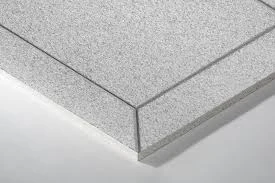- Afrikaans
- Albanian
- Amharic
- Arabic
- Armenian
- Azerbaijani
- Basque
- Belarusian
- Bengali
- Bosnian
- Bulgarian
- Catalan
- Cebuano
- Corsican
- Croatian
- Czech
- Danish
- Dutch
- English
- Esperanto
- Estonian
- French
- German
- Greek
- Hindi
- Indonesian
- irish
- Italian
- Japanese
- Korean
- Lao
- Malay
- Myanmar
- Norwegian
- Norwegian
- Polish
- Portuguese
- Romanian
- Russian
- Serbian
- Spanish
- Swedish
- Thai
- Turkish
- Ukrainian
- Uzbek
- Vietnamese
Dec . 21, 2024 01:51 Back to list
Creating Access Hatches in Plasterboard Ceilings for Easy Maintenance and Storage Solutions
The Importance of Plasterboard Ceiling Hatches in Modern Homes
In contemporary architecture and interior design, the integration of functional and aesthetic elements is paramount. Among these elements, plasterboard ceiling hatches play a crucial role, providing both convenience and practicality in a myriad of settings, particularly within residential and commercial buildings. This article explores the significance of plasterboard ceiling hatches, their installation, and the advantages they offer.
Plasterboard, also known as drywall or gypsum board, is a widely used material in construction for creating smooth surfaces on walls and ceilings. Plasterboard ceiling hatches are openings within the ceiling that allow for easy access to concealed spaces, such as attics, lofts, or the upper reaches of a building where essential systems are installed, including plumbing, electrical, and HVAC systems. These hatches are typically framed with a drywall edge, allowing them to blend seamlessly with the surrounding ceiling, providing a neat and aesthetically pleasing appearance.
One of the primary benefits of installing a plasterboard ceiling hatch is the ease of access it provides to areas that otherwise would be difficult to reach. Regular maintenance of essential systems is critical to ensure the functionality and longevity of a home. With a ceiling hatch, homeowners can easily inspect and maintain these concealed systems without the need for extensive work or alterations to the structure. This not only saves time but also reduces maintenance costs in the long run.
Moreover, plasterboard ceiling hatches enhance the safety of a property
. For instance, in the event of a plumbing issue or electrical fault, having immediate access to these systems can prevent more significant damage and allow for quicker repairs. In addition, in some locales, local building codes may require access hatches to be installed in specific areas to allow for safety inspections and emergency access.plasterboard ceiling hatch

Installation of a plasterboard ceiling hatch is a straightforward process, typically performed by skilled tradespeople or DIY enthusiasts. The process begins with identifying the optimal location for the hatch, ensuring it provides access to the necessary space without compromising structural integrity. After the opening is cut, the hatch frame is installed, and the door is mounted on hinges, allowing it to swing open with ease. Aesthetically, the hatch can be finished with paint or texture to match the surrounding ceiling, ensuring it remains a subtle feature in the home's design.
In terms of design flexibility, plasterboard ceiling hatches come in various sizes and styles, allowing property owners to select options that complement their interior décor. Some specialized hatches even feature insulation or acoustic properties, making them suitable for areas where energy efficiency and soundproofing are essential. This adaptability makes plasterboard ceiling hatches an excellent choice for a wide range of applications, from residential homes to commercial office spaces.
Another important consideration is the cost-effectiveness of installing ceiling hatches. While there might be an initial investment for materials and labor, the long-term savings through efficient system maintenance and reduced damage can far outweigh these costs. Furthermore, when planning new construction or renovations, incorporating ceiling hatches can ultimately enhance a property's value and appeal to future buyers.
In conclusion, plasterboard ceiling hatches are essential components in modern construction. They provide vital access to essential systems, enhance safety, and allow for easy maintenance while blending seamlessly into the home's design. With their many benefits and practical applications, investing in plasterboard ceiling hatches is a wise decision for both current homeowners and those planning new builds. As homes grow more complex, these hatches will undoubtedly continue to play a significant role in the functionality and livability of our living spaces.
-
Transform Interiors with PVC Gypsum Ceiling: A Stylish, Durable, and Moisture-Resistant SolutionNewsMay.19,2025
-
The Smart Interior Upgrade: Discover the Durability and Versatility of Gypsum Ceiling Access Panel SolutionsNewsMay.19,2025
-
The Smart Choice for Interior Design: Discover the Value of PVC Gypsum Ceiling SolutionsNewsMay.19,2025
-
Mineral Fiber Ceiling Tiles: The Smart Blend of Performance and AestheticsNewsMay.19,2025
-
Mineral Fiber Ceiling Tiles: The Superior Choice Over Gypsum for Sound and Fire SafetyNewsMay.19,2025
-
Mineral Fiber Ceiling Tiles: Eco-Friendly Strength and Style for Every CeilingNewsMay.19,2025







